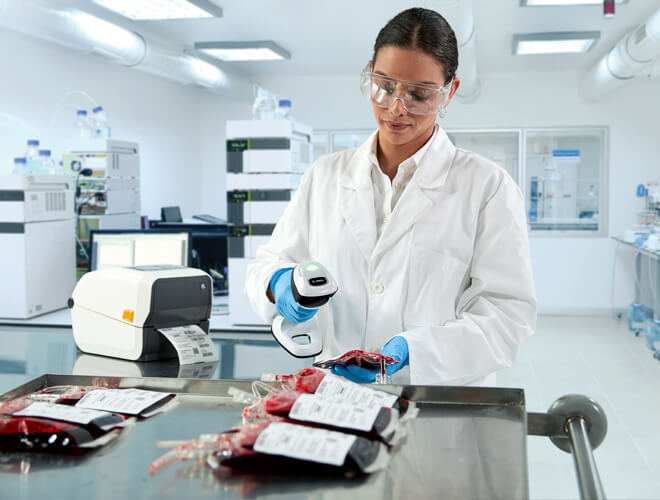A barcode scanner is a hand-held or stationary electronic device used to capture and read information contained in a barcode. They are widely used with point of sales (POS) systems and inventory management systems and has quickly become an integral part of business operations. This article will go through two common types of barcode scanners to help you in making better decisions: 1D and 2D.
Laser Scanners
Laser scanners uses two optical systems to generate a laser beam and to focus the beam. scan mirror oscillates the beam back and forth across the barcode repeatedly. The optical data captured is then sent to a decoder to be translated into digital data. Laser barcode scanners that read 1D barcode are very effective in scanning despite movements, making them a favourite choice for scanning that does not require motion insensitivity, such as in supermarkets. The combination of a low price, and accurate scanning allows for a high laser barcode scanner adoption among retails and shops.
2D Imaging Scanners
2D barcode scanners use a different approach in scanning, where it projects LED lights that illuminate the barcode. Similar to a digital camera, the lens projects the barcode image onto a 2D array and is then converted into electronic signals to reconstruct a digital image. With an advanced decoding algorithm, the decoder software will extract data from the barcode image. The biggest benefit in choosing this over conventional laser barcode scanners is that digital imaging barcode scanners can scan 2D images instead of just 1D. This can result in accommodating a larger amount of data, which is essential for industries like transportation and logistics or tracking applications.
Barcode scanning technology has come a long way since the first barcode was scanned in 1974. The main difference between 1D and 2D barcodes is the amount of information they can store. 1D barcodes can only store up to 85 characters, while 2D barcodes can store up to 7,098 characters. 2D barcodes are also more resistant to damage and can be read from any direction.
So, if you need to store a lot of data in your barcodes, or if you need to be able to scan barcodes from any angle, 2D barcodes are the way to go. Otherwise, 1D barcodes will probably suffice.




